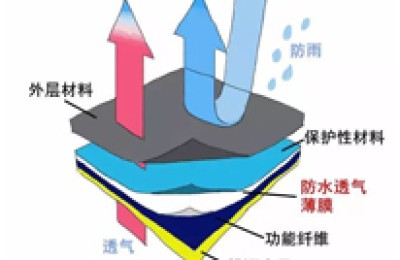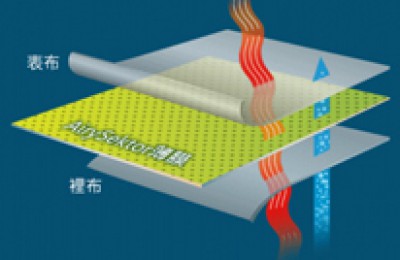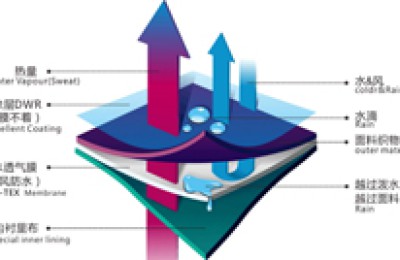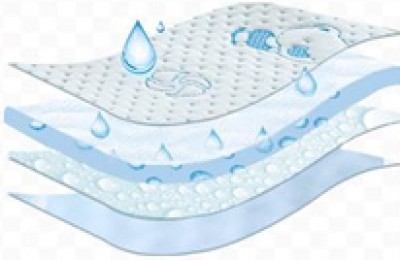On February 2, at the “2015 China-Asia Textile International Forum”, President Jiang Hui of the Textile Chamber of Commerce delivered a keynote speech, comprehensively elaborating on the development status of China’s textile and apparel trade in 2014, as well as the problems and prospects faced by the industry.
[Development of China’s textile and apparel trade in 2014]
Since the financial crisis in 2008, China’s textile and apparel exports have entered a medium-to-low-speed growth channel. In 2014, China’s textile and apparel exports amounted to US$298.42 billion, an increase of 5.1%. Among them, clothing exports were US$186.28 billion, an increase of 5.2%, and textile exports were US$112.14 billion, an increase of 4.9%. The annual import of textiles and clothing was US$26.55 billion, a year-on-year decrease of 1.7%, of which textile imports were US$20.39 billion, a decrease of 5.9%, and clothing imports were US$6.16 billion, an increase of 15.8%.
The share of traditional markets has further declined, while the share of emerging markets has increased.
The share of Europe, the United States and Japan in the export market dropped from 50.4% in 2009 to 42.9% in 2014, a decrease of 7.5 percentage points. The proportion of emerging markets increased from 41.3% in 2009 to 51.6% in 2014, an increase of 10.3 percentage points in five years.
Exports of most major categories of commodities achieved growth.
Exports of yarn decreased by 0.3%, exports of fabrics increased by 4.9%, exports of finished products increased by 6.3%, and exports of clothing increased by 5.2%. The proportion of textile exports in total exports increased by 1.6 percentage points compared with 2009. The proportion of clothing exports decreased accordingly.
The proportion of processing trade continues to decline.
General trade exports increased by 5.8%, and their proportion in overall exports increased from 72.1% in 2009 to 75.9% in 2014. Processing trade exports fell by 2.9%, and their proportion in exports dropped from 20.8% in 2009 to 13.6% in 2014. The self-sufficiency of raw materials and semi-finished products in China’s textile industry continues to improve.
Private enterprises are the main force driving export growth.
In 2014, China had a total of 88,000 textile and garment export companies, including 68,000 private enterprises, accounting for 77%, 18,000 foreign-funded enterprises, accounting for 20%, and state-owned enterprises accounting for only 3%. China’s textile and apparel export growth is entirely driven by private enterprises.
The import structure has changed significantly, with general trade imports and finished product imports maintaining growth.
Processing trade imports decreased by 10.2%, and general trade imports increased by 3%. The proportion of general trade imports in total imports increased from 24% in 2009 to 48.5% in 2014, exceeding the proportion of processing trade for the first time, and was directly used domestically. Imports of textiles and clothing for consumption continue to increase. The proportion of textiles in imports dropped from 89% in 2009 to 76.8% in 2014, indicating an increase in self-sufficiency in semi-finished textile products and an increase in domestic market demand for international brand clothing.
[Although China’s market share of some products has declined, its overall position is unshakable]
According to WTO statistics, in 2013, China’s share of global textile and apparel trade was 37.1%. In the past ten years, China’s global share has increased by 17 percentage points. No one can shake China’s advantages for a certain period of time. But at the same time, China’s share of major markets has been slowly declining in recent years.
[United States]China’s share decreased by 0.5 percentage points from 2011 to 2014, while Vietnam’s share increased by 2 percentage points. The downward trend in clothing share is even more obvious. From 2011 to 2014, China’s share of U.S. apparel imports dropped by 1.3 percentage points, while Vietnam’s share increased by 2.6 percentage points.
[European Union]China’s share decreased by 3.3 percentage points from 2011 to 2014, while Bangladesh’s share increased by 2.6 percentage points. The downward trend in clothing share is even more obvious. From 2011 to 2014, China’s share of EU clothing imports dropped by 5 percentage points, while Bangladesh increased by 3.5 percentage points.
[Japan]Although China’s share once reached over 75%, it has declined at an alarming rate, with a decrease of 7.4 percentage points from 2011 to 2014, while Vietnam’s share increased by 3 percentage points.
[Canada]China’s share dropped from 41% in 2011 to 38.8% in 2014.
The competitive advantage of Chinese products in major export markets has been greatly challenged, but the production transferred to other countries is basically low-end products, while the production of mid-to-high-end products remains in China.
[Main problems currently faced by China’s textile and apparel export industry]
Labor costs remain high.
A total of 19 provinces across the country adjusted their minimum wage standards in 2014, with an average increase of 14.1%. In recent years, the average annual increase in monthly minimum wages across China has exceeded 20%. Labor costs have more than tripled in the past 10 years, and the current cost of labor in the textile industry in coastal areas has exceeded 4,000 yuan per month. In terms of social security, not only the payment base has increased year by year, but the total social security rate is also generally high, totaling more than 40% of an individual’s salary, which has greatly increased the burden on enterprises.
The labor shortage contradiction is becoming increasingly prominent.
Since 2012, China’s working-age population has been declining for three consecutive years. In 2014, the working-age population aged 16-60 decreased by 3.71 million people. The demographic dividend on which labor-intensive industries rely for their survival and development has gradually disappeared. At the same time, difficulty in recruiting and recruiting skilled workers has become a major problem faced by most manufacturers in recent years.
The RMB exchange rate has increased in volatility.
Since the exchange rate reform in July 2005, the RMB has appreciated by 35% against the US dollar. In 2014, the RMB exchange rate entered a two-way trend.To implement the “new normal”, the central parity rate of RMB against the US dollar fell by 0.36% throughout the year, and the spot exchange rate fell by 2.42%. Although the lower exchange rate has brought certain benefits to export companies, the expansion of the two-way floating range has put forward higher requirements for corporate finance and risk management. As the U.S. dollar continues to strengthen, the euro and the yen depreciated by more than 9% and 12% respectively against the U.S. dollar last year. This will have an impact on my exports to the EU and Japan.
Competitive pressure from other Asian countries has increased.
According to Japan External Trade Organization survey data in 2014, the average employer salary burden (including social security, etc.) of Chinese companies reached US$684, that of Thailand was US$593, that of India was US$302, and that of Vietnam, Myanmar, Cambodia, and Bangladesh was US$249 and US$172 respectively. , $157 and $132. China’s labor cost is 2.5-5 times that of Vietnam, Bangladesh and other countries.
The trade model is single and lacks independent brands, design and innovation.
In the composition of the global clothing value chain, the profits obtained from the production link only account for 10% of the total profits, and the majority are in the brand, marketing, design and R&D links. China is losing its competitive advantage in the manufacturing sector, but it is not extending to both ends of the smile curve of the value chain fast enough. It still lacks design innovation capabilities and is still a primary school student in the areas of distribution and branding.
[Some thoughts on the future development direction of the industry]
Structural adjustment, transformation and upgrading are the top priorities for industry development.
At present, the textile and garment industry is gradually eliminating the bad and retaining the good through structural adjustment and industrial integration. A number of leading companies that are developing rapidly in supply chain management, energy conservation and emission reduction, and domestic and international layout are standing out.
Adhere to the path of sustainable development.
Paying attention to environmental protection, energy conservation and adhering to social responsibilities is becoming the consensus of more and more Chinese companies. China’s textile and apparel industry has formulated an action plan to reduce unit energy consumption and industrial carbon dioxide emissions by 20% from 2010 to 2015, reduce unit water consumption by 30%, and reduce major pollutant emissions by 10%.
Upgrade the value chain and cultivate new competitive advantages.
Textile and apparel companies adjust product structures, innovate trade models, enhance product added value, provide value-added services, improve product design and research and development capabilities, improve supply chain management levels, cultivate their own brands, develop domestic sales markets, carry out cross-border e-commerce, and establish international Marketing networks and other means can enhance their position in the product value chain and cultivate new competitive advantages.
Steadyly advance the “going out” strategy.
As China’s “going global” pace continues to accelerate, the textile and apparel industry has established overseas production bases in ASEAN countries and established R&D and distribution centers in developed countries to reduce risks and obtain maximum benefits. However, in recent years, some countries have experienced frequent social unrest, and the political risks, strikes and safety issues caused by overseas investment have attracted increasing attention.
Panorama of textile and apparel trade under the new normal
On February 2, at the “2015 China-Asia Textile International Forum”, President Jiang Hui of the Textile Chamber of Commerce delivered a keynote speech, comprehensively elaborating on the development…
This article is from the Internet, does not represent Composite Fabric,bonded Fabric,Lamination Fabric position, reproduced please specify the source.https://www.yjtextile.com/archives/12444






